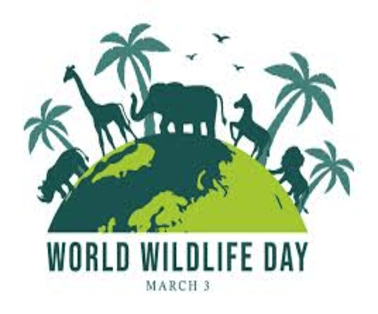March 3 marks the 51st anniversary of the Convention on International Trade in Endangered Species of Wild Fauna and Flora (CITES), a critical agreement aimed at conserving endangered species. In recognition of this milestone, the global community also celebrates World Wildlife Day (WWD), highlighting the importance of wildlife conservation and the protection of biodiversity.
Key Points
- CITES is a landmark international agreement that ensures the sustainable use and conservation of endangered species.
- World Wildlife Day is celebrated annually on March 3 to draw attention to the conservation of wildlife and plant species globally.
- This United Nations International Day honors wild animals and plants, recognizing their importance to the health of the planet.
- The date, March 3, was specifically chosen to coincide with the signing of CITES in 1973.
- The theme for World Wildlife Day 2023 was ‘Partnerships for Wildlife Conservation.’
What is the CITES?
- CITES is an international agreement between governments.
- Its aim is to ensure that international trade in specimens of wild animals and plants does not threaten the survival of the species.
- It accords varying degrees of protection to more than 37,000 species of animals and plants, ranging from live animals and plants to wildlife products derived from them, including food products, exotic leather goods, medicines, etc.
- Currently, there are 184 parties to the convention, including India.
- The CITES Secretariat is administered by UNEP (The United Nations Environment Programme) and is located in Geneva, Switzerland.
- The Conference of the Parties to CITES is the supreme consensus-based decision-making body of the Convention and comprises all its parties.
- It was drafted as a result of a resolution adopted in 1963 at a meeting of members of IUCN (The World Conservation Union). It entered into force in July 1975.
- Although CITES is legally binding on the Parties– in other words, they have to implement the Convention – it does not take the place of national laws.
How Does CITES Work?
- The species covered under CITES are listed in three Appendices, according to the degree of protection they need.
- Appendix I includes species threatened with extinction. Trade in specimens of these species is permitted rarely, only in “exceptional circumstances”, such as gorillas, and lions from India.
- Appendix II includes species not necessarily threatened with extinction, but in which trade must be controlled to ensure their survival. For example, certain kinds of foxes and Hippopotamuses.
- Appendix III contains species that are protected in at least one country, which has asked other CITES Parties for assistance in controlling the trade, like the Bengal fox or the Golden Jackal from India.
- Different procedures are given category-wise to engage in the trade of species in each of the lists.
Criticism of CITES
- Having wildlife allowed to be traded further legitimises their movement and increases the possibility of their illegal trade.
- 2019 analysis in the journal Science that found in nearly two-thirds of cases, CITES protections lag after a species is determined to be threatened by international trade.
- Also, many animals that are in the wildlife trade are not protected by CITES.
- Voluntary nature of CITES membership means nobody is strictly bound to follow its direction.
- CITES has been questioned on matters such as the ivory trade being allowed at times despite the convention banning it in 1989.
- CITES has had some successes, helping in recovering the South American vicuña (a small member of the camel family) and the Nile crocodile.
India’s Role in Wildlife Conservation
- In India, apart from the Union Ministry of Environment, Forests and Climate Change, the Wildlife Crime Control Bureau is a statutory body under the Ministry that is especially meant to combat organised wildlife crime in the country.
- It assists and advises the customs authorities in the inspection of the consignments of flora and fauna as per the provisions of the Wild Life Protection Act of 1972, CITES and the export and import policy governing items.
- India accounts for 7-8% of all recorded species, including over 45,000 species of plants and 91,000 species of animals.
- India is one of the most biodiverse regions of the world, home to three biodiversity hotspots – the Western Ghats, the Eastern Himalayas, and the Indo-Burma hotspot.
- India is home to a number of wildlife conservation parks and sanctuaries, notable among those are Jim Corbett National Park in Uttarakhand, Ranthambore National Park in Rajasthan, Gir National Park in Gujarat, Bannerghatta Biological Park in Karnataka, Periyar National Park in Kerala, Hemis National Park in Ladakh, The Great Himalayan National Park in Himachal Pradesh.
Constitutional Provisions for Wildlife Protection in India
- By the 42nd Amendment Act 1976 of the Constitution “Forests” was added as Entry 17A in the Concurrent List and the “protection of wild animals and birds” was added as Entry 17B.
- Article 51 A (g) of the Constitution states that it shall be the fundamental duty of every citizen to protect and improve the natural environment including forests and Wildlife.
- Article 48 A in the Directive Principles of State policy, mandates that the State shall endeavor to protect and improve the environment and to safeguard the forests and wildlife of the country.
- Acts such as: Wildlife (Protection) Act, 1972, Environment Protection Act, 1986, The Biological Diversity Act, 2002
To Download Monthly Current Affairs PDF Click here
Click here to get a free demo
Everything About CLAT 2026



